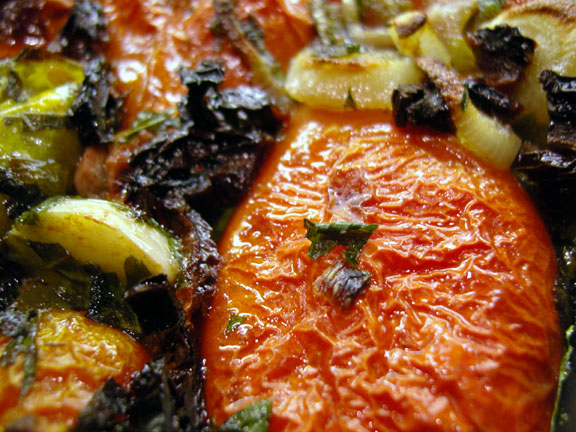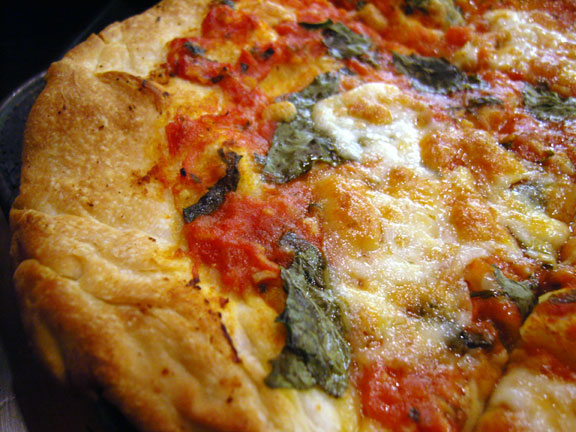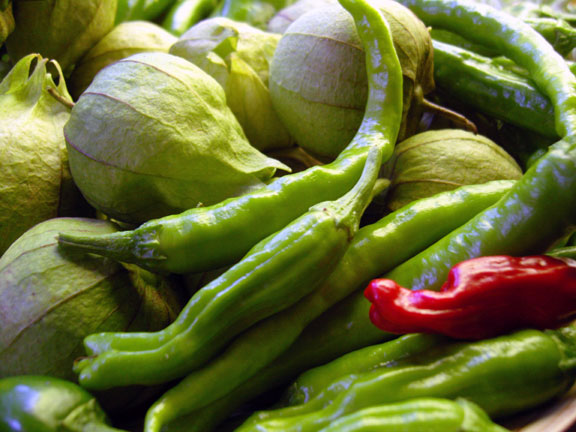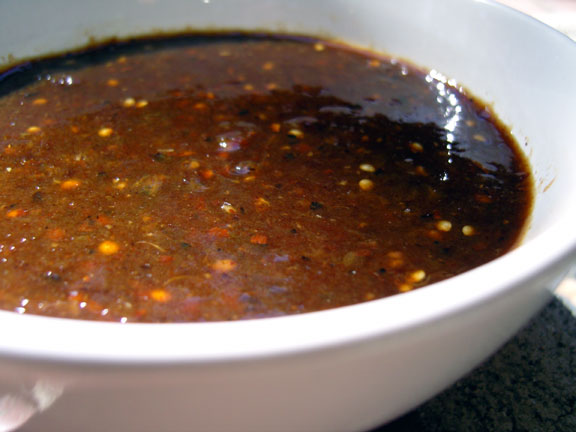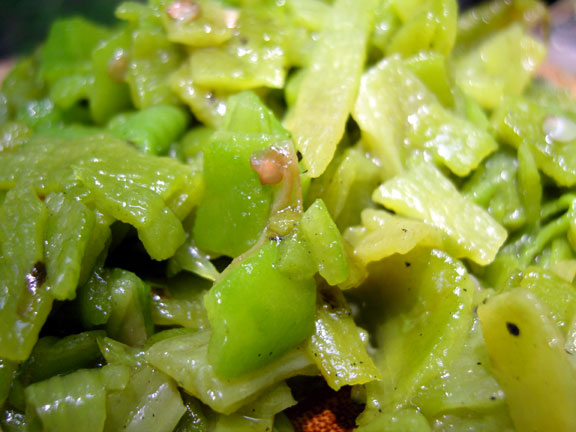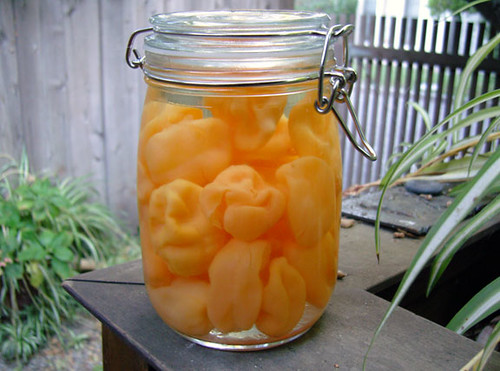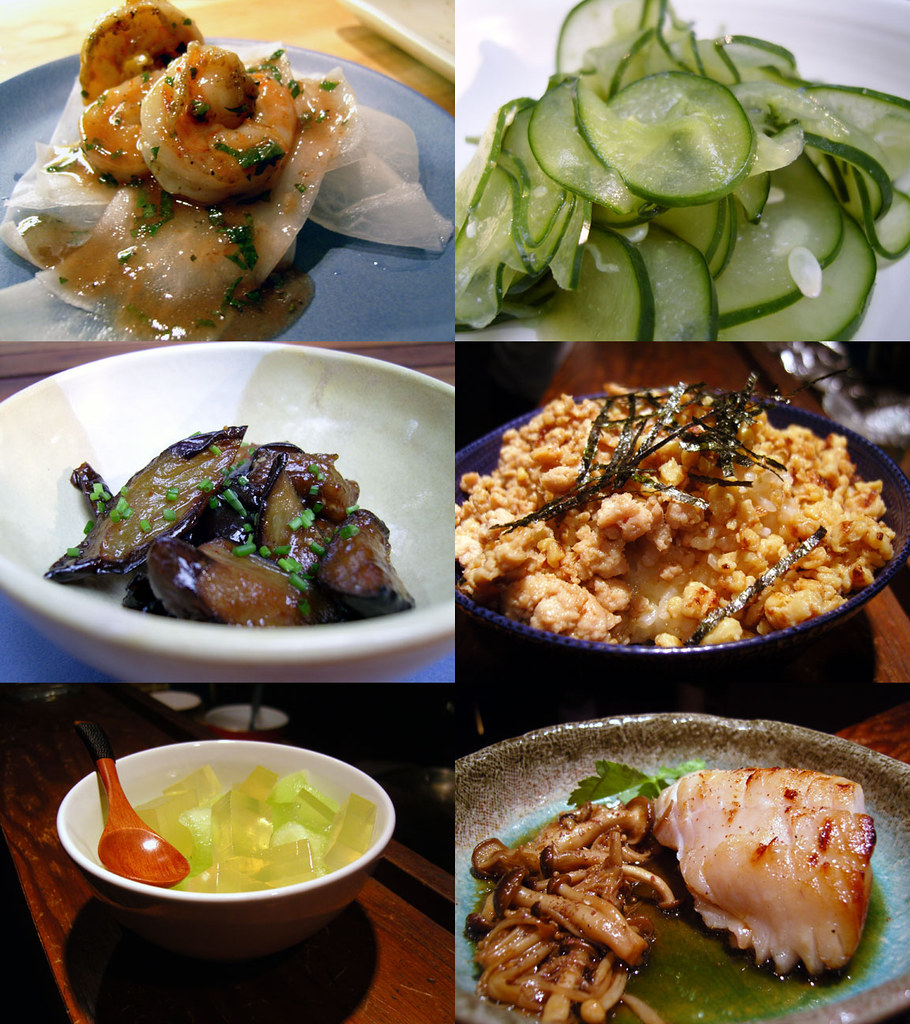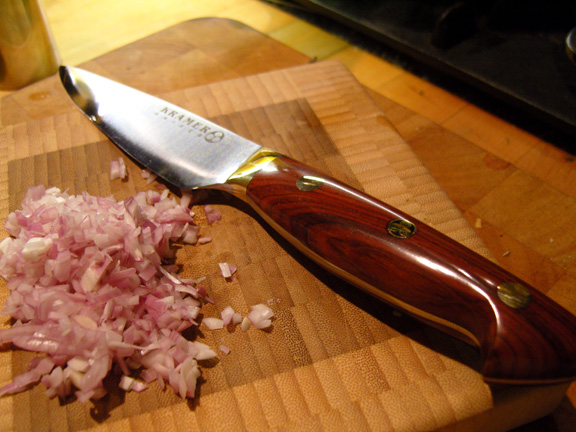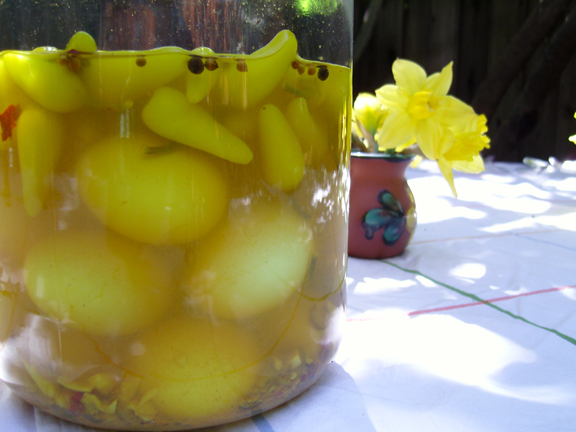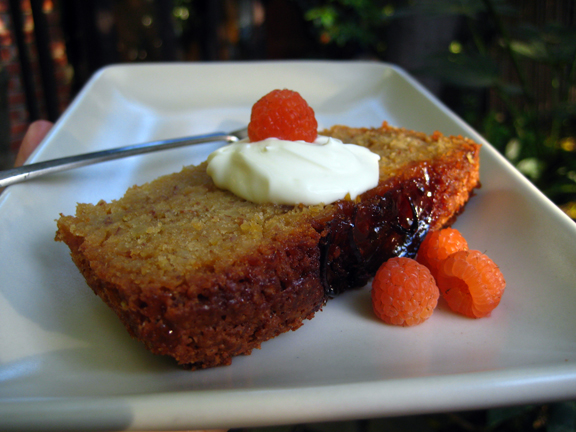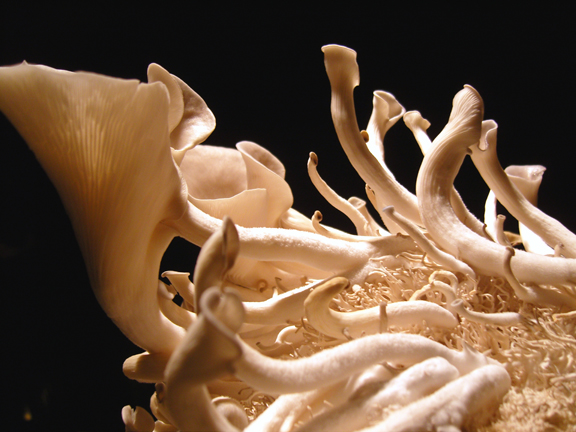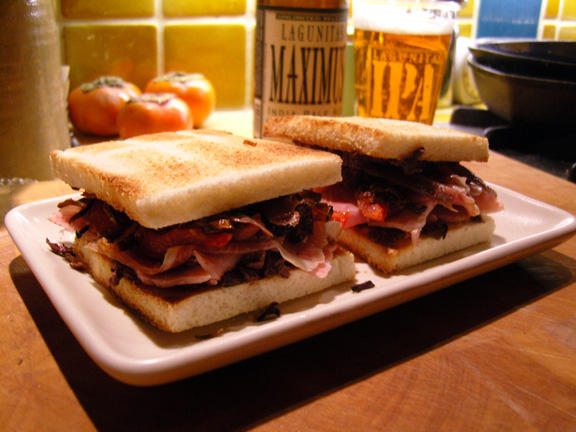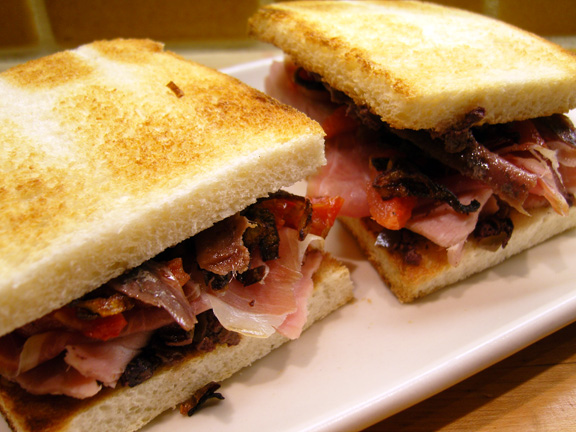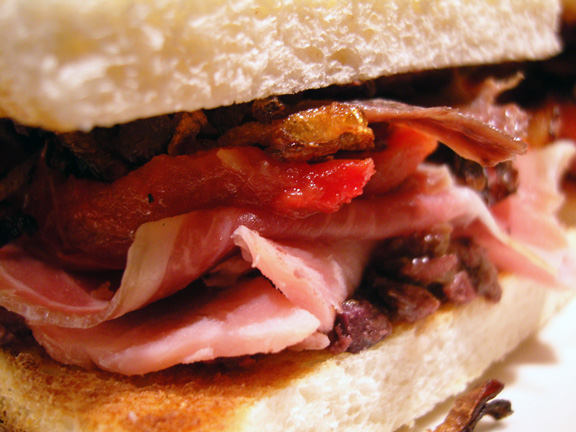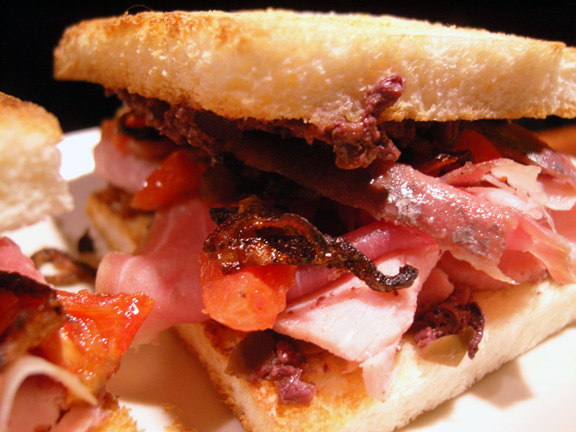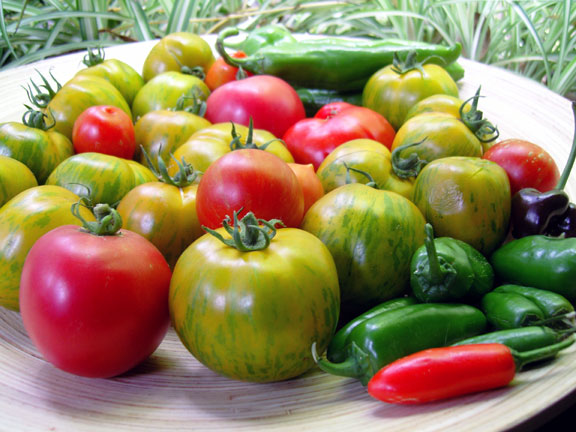 Of course, it is a little late in the season to be talking about tomatoes and their brethren, but who truly cares. Tomatoes are the best part of summer gardening and if you took some time to preserve them, you would be lucky enough to be enjoying them now. Here are a couple of ideas that can be frozen for the wintry tomatoless months. (Better yet, they are great easy recipes for tomato season and fantastic fresh)
Of course, it is a little late in the season to be talking about tomatoes and their brethren, but who truly cares. Tomatoes are the best part of summer gardening and if you took some time to preserve them, you would be lucky enough to be enjoying them now. Here are a couple of ideas that can be frozen for the wintry tomatoless months. (Better yet, they are great easy recipes for tomato season and fantastic fresh)GARDEN ROASTED TOMATO SAUCE
San Marzano tomatoes - cored, halved & de-seeded
Green Zebra tomatoes - cored, halved & de-seeded
4 garlic cloves - peeled & halved
1 Anaheim chile - roasted, peeled, seeded & chopped
1 jalapeno chile - seeded & chopped
1 small yellow onion - sliced into thin rings
3 anchovies - finely diced
3 Larry's smoked tomatoes (Boggy Creek Farm) - soaked in hot water until soft & finely sliced
Handful fresh parsley - finely chopped
Leaves of fresh oregano from a few sprigs - finely chopped
Handful fresh basil leaves - finely chopped
2 tbsps olive oil
sea salt
fresh ground pepper
Gently mix all ingredients in a bowl and then place tomatoes cut-side down in an oven safe baking dish. Pour remainder of herbs and oil over the tomatoes. Bake in a pre-heated oven at 425 degrees for approximately 45 minutes. You can then either puree, chop or mash to your liking. It all depends how rustic you like your sauce. NOTE: you may need to add a bit of lemon or vinegar to brighten it and some red pepper flakes to give it some bite.
I served the sauce tossed with Trofie pasta and grated parmesan cheese. Trofie are a type of Ligurian gnocchi made with only flour and water. They are little squiggly twisted short noodles and hold sauce very well. They're a very easy fresh pasta to make. No machine. Just rolling dough out on a floured work surface, cutting into pieces, and rolling into a twist. Delicious cakewalk.
I also used the tomato sauce as a pizza sauce. The only difference was that I ran it through a food mill until I had a very smooth tomato sauce.
END NOTE: We froze this sauce. If you were going to make it for canning purposes you would have to adjust the acid content by adding lemon juice or vinegar. Here is a link to a simple sauce designed for home canning.
ROASTED TOMATILLO SALSAS - TWO WAYS
MISE EN PLACE FOR BOTH SALSAS
2.75 lbs fresh tomatillos
6 fresh serrano chiles
3 fresh jalapeno chiles
1 fresh poblano chile
10 large cloves of garlic
1 fresh serrano chile - chopped with seeds
Roast the tomatillos on a foil lined baking sheet under the broiler until black spots show and the tomatillos are softened and juicy. Alternately, you could use a grill with drip pan or a cast-iron skillet. Collect the tomatillos and their juices in a bowl and set aside.
Flatten the dried chipotles (de-seed if you wish, depending on how hot you prefer your salsa). Roast them on a griddle or cast-iron pan until fragrant, slightly toasted and darkened. Soak the chiles in hot water for 30 minutes.
Roast the 6 fresh serranos, jalapenos, poblano, and 10 garlic cloves on a griddle until blackened. The garlic should just be roasted until it shows black spots on all sides (peel when cool to the touch and reserve). When roasted, put the chiles in a paper bag and close tightly for a few minutes. This will loosen the skins. Peel, seed, and roughly chop all of the chiles.
TOMATILLO SALSA
2 lbs of the roasted tomatillos
Roasted serrano chiles - peeled, seeded & roughly chopped
Roasted jalapeno chiles - peeled, seeded & roughly chopped
Roasted poblano chile - peeled, seeded & roughly chopped
7 cloves of roasted garlic - peeled & chopped
1 fresh serrano chile - chopped with seeds
1/3 cup fresh cilantro - chopped
juice from 1/2 of a lime
sea salt
1/2 small white onion - finely chopped, rinsed & drained
Mix ingredients together in a large bowl. Take all the ingredients and run through the roughest setting of a food mill in batches (I love mine and wanted one, so that I didn't have to drag out the giant food processor to do simple tasks such as this recipe). (Alternately, you can use a food processor, blender or molcajete ) Add 1/2 tsp sea salt to taste. When seasoned to your liking, stir in the finely chopped white onion. NOTE: Using a mocajete is the traditional method and creates a very rustic memorable salsa, but also, a very labor intensive salsa. A molcajete will season over time, much like a cast-iron skillet. It will also impart a subtle flavor difference from the same recipe made with a blender or food processor. The stone imparts some of it along with the seasoning.
CHIPOTLE TOMATILLO SALSA
12 ounces (3/4 lb) of the roasted tomatillos
3 of the roasted garlic cloves - peeled and chopped
7 dried rehydrated chipotle peppers - finely chopped (alternately, you could use 3-5 canned chipotles in adobo sauce)
1 tsp sea salt
1/4 tsp agave syrup
Mix all ingredients in a large bowl. Run through the rough disk of a food mill in small batches. Re-run the salsa through the food mill with a medium disk. Check for seasoning. (you could alternately use a food processor, blender or molcajete). Note: I make this salsa with both the canned chipotles and the dried. I think that the dried give it a distinctly different result than the canned. The dried give it a much more earthy deep flavor. Try it both ways.
END NOTE:
I freeze both salsas in single serving sizes, so that we can always have some salsa when needed. These salsas are intended to be eaten fresh or frozen, but not for canning. They are low acid salsas and would require the addition of an acid such as vinegar or lemon juice in the right proportion to home "can" safely. Here is a link to some salsas appropriate for canning with a hot water canner.

